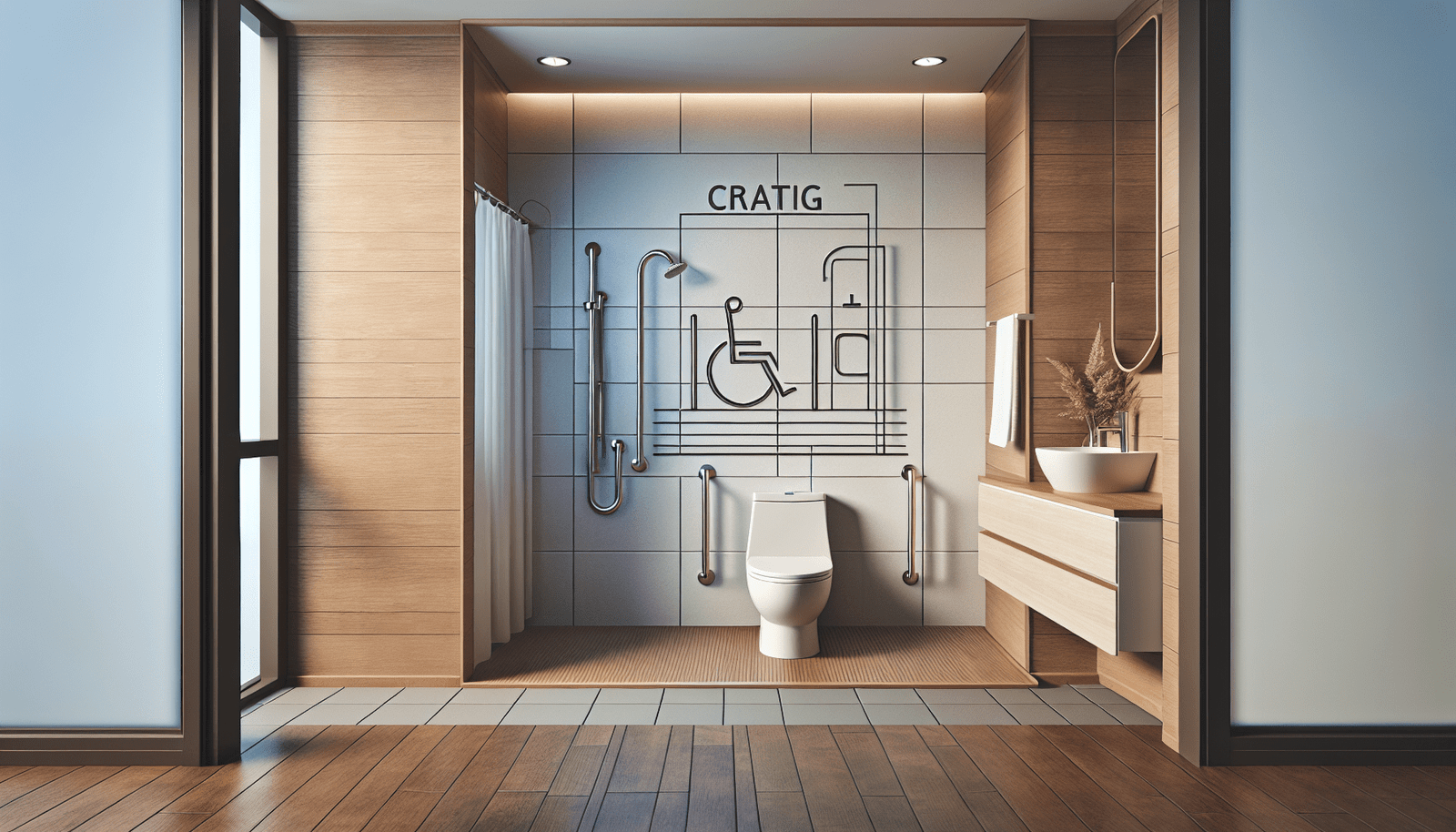
Is it Time for a Bathroom Renovation?
Are you considering renovating your bathroom to make it more accessible for people with disabilities or mobility issues? If you are looking to create a space that is inclusive and user-friendly for everyone, a bathroom renovation for accessibility might be the perfect solution. In this article, we will guide you through the process of designing an inclusive space that meets the needs of all users.
Assessing Your Current Bathroom
Before diving into the renovation process, take some time to assess your current bathroom layout and design. Consider the following questions: Can a wheelchair maneuver easily in the space? Are the countertops and sinks at a suitable height for users of different abilities? Is there enough space for a caregiver to assist with daily tasks? By understanding the strengths and limitations of your current bathroom, you can better plan for a renovation that meets your accessibility needs.
Taking Measurements
Grab a tape measure and start taking measurements of your bathroom. Measure the width of doorways, the height of countertops, and the clearance around the toilet and shower area. This information will be valuable when planning the layout of your new accessible bathroom.
Key Elements of an Accessible Bathroom
There are several key elements to consider when designing an accessible bathroom. These include features that make it easier for users with disabilities or mobility issues to navigate and use the space safely and comfortably.
Grab Bars
Grab bars are a crucial safety feature in an accessible bathroom. Install grab bars near the toilet, shower, and bathtub to provide support and stability for users when moving around the space. Make sure the grab bars are securely mounted to the wall and can bear weight.
Non-Slip Flooring
Choose flooring materials that are slip-resistant to prevent falls and accidents in the bathroom. Tiles with textured surfaces or vinyl flooring with a non-slip coating are excellent options for creating a safer environment for users with mobility issues.
Accessible Shower
An accessible shower is essential for users with disabilities who may have difficulty stepping over a bathtub ledge. Consider installing a curbless shower with a wide entrance to accommodate wheelchairs and walkers. Adding a shower seat and handheld showerhead can also enhance the usability of the shower for users with varying abilities.
Raised Toilet Seat
To make it easier for users with mobility issues to sit down and stand up from the toilet, consider installing a raised toilet seat. This simple modification can improve comfort and accessibility for users who have difficulty bending or sitting on a standard toilet.
Planning Your Bathroom Layout
When planning the layout of your accessible bathroom, consider the needs of all users and how they will interact with the space. Create a design that allows for easy navigation and use, while also incorporating safety features that promote independence and accessibility.
Clear Pathways
Ensure that there are clear pathways throughout the bathroom for users to move around safely. Allow for ample space between fixtures and furniture to accommodate wheelchairs, walkers, and caregivers. Consider widening doorways and removing unnecessary obstacles to improve accessibility.
Adjustable Fixtures
Opt for adjustable fixtures such as height-adjustable sinks and toilets that can be customized to meet the needs of users with different abilities. These fixtures can be raised or lowered to provide comfortable access for users of varying heights and mobility levels.
Task Lighting
Proper lighting is essential in an accessible bathroom to enhance visibility and safety for all users. Install task lighting near the toilet, shower, and vanity area to illuminate key areas and reduce the risk of accidents. Consider incorporating motion-activated lights for added convenience and energy efficiency.
Choosing Accessible Fixtures and Accessories
Selecting the right fixtures and accessories for your accessible bathroom is crucial to creating a functional and user-friendly space. Look for products that are designed with accessibility in mind, such as grab bars, shower seats, and handheld showerheads.
Handheld Showerhead
A handheld showerhead is a versatile accessory that can make bathing easier for users with disabilities or mobility issues. It allows users to control the direction and flow of water while sitting or standing, making showering more comfortable and convenient.
Shower Seat
Installing a shower seat in your accessible bathroom provides a stable and comfortable seating option for users who may have difficulty standing for long periods. Choose a sturdy shower seat that can be folded up when not in use to maximize space in the shower area.
Height-Adjustable Sink
A height-adjustable sink is a practical addition to an accessible bathroom that can accommodate users of different heights and abilities. Opt for a sink with a lever-operated or electronic height adjustment mechanism for easy customization.
Conclusion
Designing an accessible bathroom requires careful planning and attention to detail to create a space that is safe, functional, and inclusive for all users. By considering the key elements of accessibility and incorporating features that promote independence and usability, you can transform your bathroom into a welcoming and barrier-free environment. Whether you are renovating your bathroom for personal use or for a family member with disabilities, taking the time to design an accessible space will have a lasting impact on the comfort and well-being of all users.

